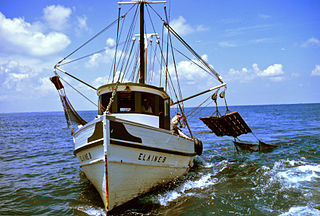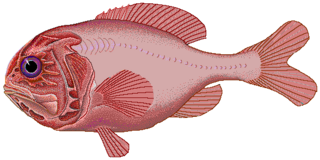Related Research Articles
Hemiparesis, or unilateral paresis, is weakness of one entire side of the body. Hemiplegia is, in its most severe form, complete paralysis of half of the body. Hemiparesis and hemiplegia can be caused by different medical conditions, including congenital causes, trauma, tumors, or stroke.

Psychometrics is a field of study within psychology concerned with the theory and technique of measurement. Psychometrics generally refers to specialized fields within psychology and education devoted to testing, measurement, assessment, and related activities. Psychometrics is concerned with the objective measurement of latent constructs that cannot be directly observed. Examples of latent constructs include intelligence, introversion, mental disorders, and educational achievement. The levels of individuals on nonobservable latent variables are inferred through mathematical modeling based on what is observed from individuals' responses to items on tests and scales.

Psychological testing is the administration of psychological tests. Psychological tests are administered by trained evaluators. A person's responses are evaluated according to carefully prescribed guidelines. Scores are thought to reflect individual or group differences in the construct the test purports to measure. The science behind psychological testing is psychometrics.
The Glasgow Coma Scale (GCS) is a clinical scale used to reliably measure a person's level of consciousness after a brain injury.

The fishing industry includes any industry or activity that takes, cultures, processes, preserves, stores, transports, markets or sells fish or fish products. It is defined by the Food and Agriculture Organization as including recreational, subsistence and commercial fishing, as well as the related harvesting, processing, and marketing sectors. The commercial activity is aimed at the delivery of fish and other seafood products for human consumption or as input factors in other industrial processes. The livelihood of over 500 million people in developing countries depends directly or indirectly on fisheries and aquaculture.
The Neonatal Behavioral Assessment Scale (NBAS), also known as the Brazelton Neonatal Assessment Scale (BNAS), was developed in 1973 by Dr. T. Berry Brazelton and his colleagues. This test purports to provide an index of a newborn's abilities, and is usually given to an infant somewhere between the age of 3 days to 4 weeks old. This approach was innovative for recognizing that a baby is a highly developed organism, even when just newly born. The profile describes the baby's strengths, adaptive responses and possible vulnerabilities. This knowledge may help parents develop appropriate strategies for caring in intimate relationships to enhance their earliest relationship with the child.

The orange roughy, also known as the red roughy, slimehead and deep sea perch, is a relatively large deep-sea fish belonging to the slimehead family (Trachichthyidae). The UK Marine Conservation Society has categorized orange roughy as "vulnerable to exploitation". It is found in 3 to 9 °C, deep waters of the Western Pacific Ocean, eastern Atlantic Ocean, Indo-Pacific, and in the eastern Pacific off Chile. The orange roughy is notable for its extraordinary lifespan, attaining over 200 years. It is important to commercial deep-trawl fisheries. The fish is a bright, brick-red color, fading to a yellowish-orange after death.

A bioindicator is any species or group of species whose function, population, or status can reveal the qualitative status of the environment. The most common indicator species are animals. For example, copepods and other small water crustaceans that are present in many water bodies can be monitored for changes that may indicate a problem within their ecosystem. Bioindicators can tell us about the cumulative effects of different pollutants in the ecosystem and about how long a problem may have been present, which physical and chemical testing cannot.
The Central Science Laboratory (CSL) was an executive agency of the UK government branch, the Department for Environment, Food and Rural Affairs (DEFRA). It is now part of the Food and Environment Research Agency, which is in turn part of DEFRA.

The term fish processing refers to the processes associated with fish and fish products between the time fish are caught or harvested, and the time the final product is delivered to the customer. Although the term refers specifically to fish, in practice it is extended to cover any aquatic organisms harvested for commercial purposes, whether caught in wild fisheries or harvested from aquaculture or fish farming.
Psychological evaluation is a method to assess an individual's behavior, personality, cognitive abilities, and several other domains. A common reason for a psychological evaluation is to identify psychological factors that may be inhibiting a person's ability to think, behave, or regulate emotion functionally or constructively. It is the mental equivalent of physical examination. Other psychological evaluations seek to better understand the individual's unique characteristics or personality to predict things like workplace performance or customer relationship management.

Palaemon serratus, also called the common prawn, is a species of shrimp found in the Atlantic Ocean from Denmark to Mauritania, and in the Mediterranean Sea and Black Sea.
The Narcissistic Personality Inventory (NPI) was developed in 1979 by Raskin and Hall, and since then, has become one of the most widely utilized personality measures for non-clinical levels of the trait narcissism. Since its initial development, the NPI has evolved from 220 items to the more commonly employed NPI-40 (1984) and NPI-16 (2006), as well as the novel NPI-1 inventory (2014). Derived from the DSM-III criteria for Narcissistic personality disorder (NPD), the NPI has been employed heavily by personality and social psychology researchers.

Pain negatively affects the health and welfare of animals. "Pain" is defined by the International Association for the Study of Pain as "an unpleasant sensory and emotional experience associated with actual or potential tissue damage, or described in terms of such damage." Only the animal experiencing the pain can know the pain's quality and intensity, and the degree of suffering. It is harder, if even possible, for an observer to know whether an emotional experience has occurred, especially if the sufferer cannot communicate. Therefore, this concept is often excluded in definitions of pain in animals, such as that provided by Zimmerman: "an aversive sensory experience caused by actual or potential injury that elicits protective motor and vegetative reactions, results in learned avoidance and may modify species-specific behaviour, including social behaviour." Nonhuman animals cannot report their feelings to language-using humans in the same manner as human communication, but observation of their behaviour provides a reasonable indication as to the extent of their pain. Just as with doctors and medics who sometimes share no common language with their patients, the indicators of pain can still be understood.
Pascalization, bridgmanization, high pressure processing (HPP) or high hydrostatic pressure (HHP) processing is a method of preserving and sterilizing food, in which a product is processed under very high pressure, leading to the inactivation of certain microorganisms and enzymes in the food. HPP has a limited effect on covalent bonds within the food product, thus maintaining both the sensory and nutritional aspects of the product. The technique was named after Blaise Pascal, a 17th century French scientist whose work included detailing the effects of pressure on fluids. During pascalization, more than 50,000 pounds per square inch may be applied for approximately fifteen minutes, leading to the inactivation of yeast, mold, and bacteria. Pascalization is also known as bridgmanization, named for physicist Percy Williams Bridgman.

Biopreservation is the use of natural or controlled microbiota or antimicrobials as a way of preserving food and extending its shelf life. The biopreservation of food, especially utilizing lactic acid bacteria (LAB) that are inhibitory to food spoilage microbes, has been practiced since early ages, at first unconsciously but eventually with an increasingly robust scientific foundation. Beneficial bacteria or the fermentation products produced by these bacteria are used in biopreservation to control spoilage and render pathogens inactive in food. There are a various modes of action through which microorganisms can interfere with the growth of others such as organic acid production, resulting in a reduction of pH and the antimicrobial activity of the un-dissociated acid molecules, a wide variety of small inhibitory molecules including hydrogen peroxide, etc. It is a benign ecological approach which is gaining increasing attention.
The Luria–Nebraska Neuropsychological Battery (LNNB) is a standardized test that identifies neuropsychological deficiencies by measuring functioning on fourteen scales. It evaluates learning, experience, and cognitive skills. The test was created by Charles Golden in 1981 and based on previous work by Alexander Luria that emphasizes a qualitative instead of quantitative approach. The original, adult version is for use with ages fifteen and over, while the Luria–Nebraska Neuropsychological Battery for Children (LNNB-C) can be used with ages eight to twelve; both tests take two to three hours to administer. The LNNB has 269 items divided among fourteen scales, which are motor, rhythm, tactile, visual, receptive speech, expressive speech, writing, reading, arithmetic, memory, intellectual processes, pathognomonic, left hemisphere, and right hemisphere. The test is graded on scales that are correlated to regions of the brain to help identify which region may be damaged. The Luria–Nebraska has been found to be reliable and valid; it is comparable in this sense to other neuropsychological tests in its ability to differentiate between brain damage and mental illness. The test is used to diagnose and determine the nature of cognitive impairment, including the location of the brain damage, to understand the patient's brain structure and abilities, to pinpoint causes of behavior, and to help plan treatment.
This page describes energy and electricity production, consumption and import in Laos.
Fugl-Meyer Assessment (FMA) scale is an index to assess the sensorimotor impairment in individuals who have had stroke. This scale was first proposed by Axel Fugl-Meyer and his colleagues as a standardized assessment test for post-stroke recovery in their paper titled The post-stroke hemiplegic patient: A method for evaluation of physical performance. It is now widely used for clinical assessment of motor function. The Fugl-Meyer Assessment score has been tested several times, and is found to have excellent consistency, responsivity and good accuracy. The maximum possible score in Fugl-Meyer scale is 226, which corresponds to full sensory-motor recovery. The minimal clinically important difference of Fugl-Meyer assessment scale is 6 for lower limb in chronic stroke and 9-10 for upper limb in sub-acute stroke.

The Research Institute of Brewing and Malting (RIBM) in Czech - was founded in 1887 and since 1994 It has been a joint-stock company. It is one of the oldest scientific research institutes in the Central European region.
References
- 1 2 Watson, Richard (January 2011). "Seafood Freshness Quality" (PDF). Sea Fish Industry Authority. FS59-0111. Retrieved 2019-10-14.
- ↑ "Torry Research Station".